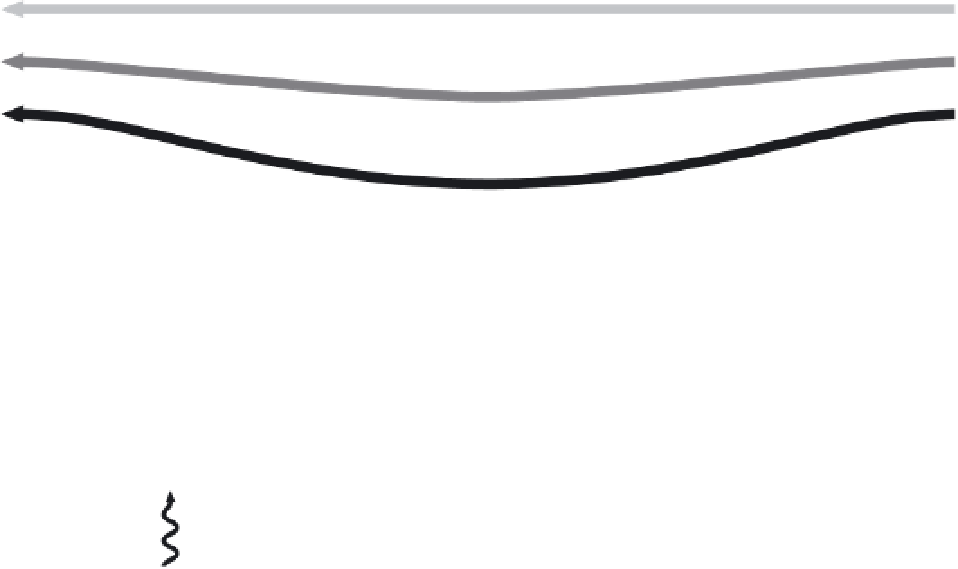Geoscience Reference
In-Depth Information
Figure 3.1
Factors influencing the high rates of interception loss from a forest canopy. The capacity of the leaves to
intercept rainfall and the efficient mixing of water vapour with the drier air above leads to high evaporative losses
(interception loss).
the canopy have time to dry out between rain
events? If so, then the interception amount is likely
to be higher. This is demonstrated in Figure 3.2
where the percentage of interception loss (inter-
ception ratio - broken line) is higher for small daily
rainfall totals and the actual interception amount
(solid line) reaches a maximum value of around
7mm even in the largest of daily rainfalls.
The amount of interception loss from an area is
climate dependent. Calder (1990) used an amal-
gamation of different UK forest interception studies
to show that there is a higher interception ratio (the
interception loss divided by above-canopy rainfall)
in drier than in wetter climates. The interception
ratio ranges from 0.45 at 500 mm annual rainfall,
to 0.27 at 2,700 mm annual rainfall. It is important
to note that these interception ratio figures have
considerable inter-annual variability.
Interception amount
Interception ratio
8
0.7
7
0.6
6
0.5
5
0.4
4
0.3
3
0.2
2
0.1
1
0
0
0
20
40
60
80
Daily rainfall (mm)
Figure 3.2
Empirical model of daily interception loss
and the interception ratio for increasing daily rainfall.
An interception ratio of 1.0 means all rainfall becomes
interception loss.
Redrawn from Calder (1999)










